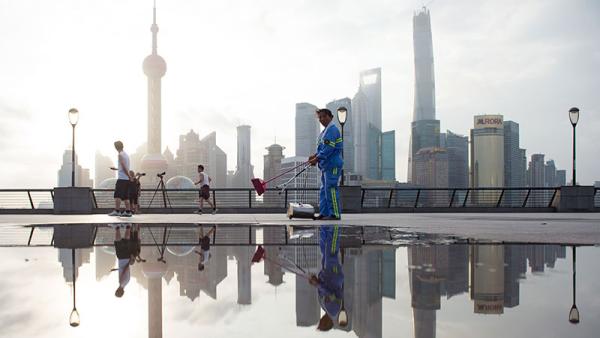China’s workers must spend if economy is to gain steam

James Laurenceson, Deputy Director, Australia-China Relations Institute, University of Technology Sydney |
This article appeared in The Australian Financial Review on August 26 2014.
It's crunch time for China's economy. The country's long-term health requires a new model where growth is driven by consumption. The next few months should tell us whether China's leaders are able to pull it off.
Last week, we saw a snapshot of where growth driven by investment eventually leads. Overcapacity in the property sector has resulted in home prices falling in most cities for three straight months.
The impact on Australia's resources sector of a fall in construction activity in China would be bad enough. If soured property deals spill over to infect the financial system, the consequences are too dire to contemplate.
June's trade figures showed that Australia's annual goods exports to China top $100 billion. These exports are more, than double those of our next largest customer, Japan. Our own economic fortunes depend more on China getting it right than ever before.
The symptoms of unbalanced growth can be seen beyond real estate.
A decade ago the investment share of GDP was 40 per cent and the economy was growing at above 10 per cent. Over the past two years, the investment share has been 48 per cent but growth of less than 8 per cent has been managed. The returns to investment are falling.
an expansion in credit. But over the past six years, credit has been growing at two and a half times the pace of what the economy has been producing. The sharp fall in new credit in July -just one seventh that of June's figure - shows the party could be over. For all these woes, a collapse is not inevitable. The solution is greater consumption spending. This will increase the returns on the capital that companies have invested. It will also close the gap between aggregate demand
and supply.
Some commentators such as Yiping Huang, a professor of economics from Peking University, are convinced that rebalancing has already begun.
He was a recent visitor to Australia as a guest of the Australia-China Relations Institute (ACRI) and has been bullish about Chinese consumption for the past two years.
It's a view shared by The Economist. Last month it noted that between 2010 and 2013 the household consumption share of GDP rose by 1.3 percentage points.
In the first quarter of this year, consumption contributed 5.7 percentage points to growth, compared with 3.1 percentage points for investment
But the truth is that China remains tied to investment as much as ever. Since 2010, the investment share of GDP has fallen by fewer than 0.3 percentage points. This is less than a statistical blip.
As for those consumption figures earlier this year, anyone who has lived in China knows the secret Chinese New Year dominates the first quarter.
Millions of workers return home, their pockets full of red envelopes stuffed with money and their arms heavy with gifts - electronic goods, clothes, gourmet foodstuffs - from the mega-malls of Beijing, Shanghai and Guangzhou.
By the end of June, the lead of consumption over investment had almost been erased.
For consumption-led growth to really take hold, households need more income. They also need to save less.
These are now the crucial tripwires: the growth of real wages and household savings' rates.
And we can home in closer. The wage to watch is the one paid to migrant workers. It was their seemingly unlimited supply that for many years held down broader wage growth across the economy.
In 2010-2011,there was some excitement when these workers began seeing their pay packets expand at an annual rate of 20 per cent to 30 per cent This proved temporary. The latest data show growth of 8 per cent in real terms, more or less in line with the growth of the broader economy at 7.4 per cent
The most recent Westpac-MNI China consumer sentiment survey also shows that the household savings rate has not fallen. It stands at about 32 per cent and since the survey began in 2007, the trend has been up.
Rebalancing will not be automatic. The would-be losers - notably the state-owned enterprises that have become used to their investment hunger being satisfied by cheap credit - continue to resist
By the middle of October we'll know whether Xi Jinping's economic reform agenda has the same head of steam as his anti-corruption drive. Last year, it was in the September quarter that investment reasserted its dominance. But if consumption bounces, pressure on wages builds and households show more confidence to spend, then it will look like this ambitious rebalancing finally has a strong east wind in its sails.
Author
Professor James Laurenceson is Deputy Director of the Australia-China Relations Institute at the University of Technology Sydney.

